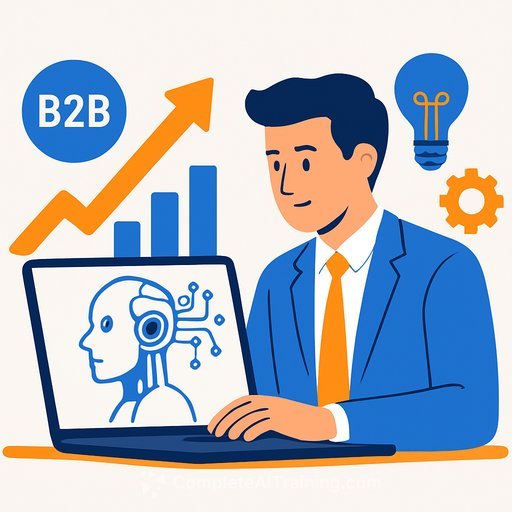What Marketers Can Learn From The Backlash To Coke's AI Holiday Ads
Coca-Cola leaned on generative AI for its holiday spot again. For the second year in a row, the internet pushed back - this time spotting inconsistencies that undercut claims of tight human oversight.
The takeaway isn't "don't use AI." It's this: use AI the way a great director uses VFX - in service of story, brand codes, and emotional truth. Otherwise, the work reads cold, even if the craft is impressive.
1) Story first, AI second
Audiences felt the ad lacked warmth - the small human cues previous Coke Christmas spots are known for. Even with animals replacing people to dodge the uncanny valley, it still felt distant.
Principle: if the tool becomes the star, the brand disappears. Lead with narrative, ritual, music, and moments that feel lived-in. Let AI support, not replace, the signal.
2) Consistency is trust
Commenters called out mismatched Coca-Cola trucks and other continuity issues. Those micro-errors scream "synthetic," and they pull viewers out of the story.
- Lock brand codes: hero red, truck livery, lighting, product detail, logo integrity.
- Set style frames and a model sheet before production; approve them like you would a storyboard.
- Use prompt/version control and fixed seeds to keep scenes consistent.
- Assign a human "animation director" to own continuity and final comp.
3) Cost savings are real - but so is brand risk
Coke's CMO said the new spot took about a month vs. a year, and was cheaper. That tracks. Generative tools can trim large holiday productions by 60%-70% according to industry estimates, freeing budget and time.
Before you chase savings, price the downside. A viral thread about "fake-looking" creative can wipe out those gains in days. Use AI for speed, not shortcuts on craft or QA. For context on broader trends, see Deloitte's Global Marketing analysis here.
4) Don't sleep on nostalgia
Should Coke have rerun the classic 1995 "Holidays Are Coming"? Some marketers say yes - heritage work often "wears in" and improves with repeat exposure, according to System1's creative effectiveness research.
That's a valid play. Nostalgia builds mental availability. Consider a hybrid strategy: air the classic at scale, test new AI work in lower-risk channels, and only scale what wins. More on creative testing from System1 here.
5) Novelty fades fast
AI-led work grabbed attention last year. This year, the shine is wearing off. System1 saw ratings drop for other AI-themed spots (e.g., Google Gemini's "Dear Sydney"). Freshness alone isn't a strategy.
Build enduring assets and deploy AI to extend them - not to chase the trend cycle.
6) Social algorithms can magnify a small backlash
A loud minority can look like a majority once platforms start boosting negative commentary. If the narrative becomes "AI ads are inauthentic," neutral viewers will approach your work with suspicion.
- Set up social listening and alert thresholds before launch.
- Pre-brief PR and community teams with likely critiques and approved responses.
- Have alternates ready (cuts, thumbnails, copy) to test if sentiment dips.
- Cap spend until creative proves out-of-the-gate acceptance.
The practical AI ad playbook
- Brief: Define the human story first. Clarify the role AI plays (speed, scale, look), and what it does not replace.
- Previz: Approve style frames, a color bible, asset packs, and a shot list with continuity rules.
- Production: Standardize prompts, lock seeds, use a versioned asset library, and track changes.
- Quality control: Run "error hunts" for hands, text, logos, reflections, continuity, and physics.
- Testing: Pretest multiple cuts (nostalgia-led vs. novelty-led) with brand codes isolated.
- Transparency: If AI is central to the idea, own it. If it's a tool, don't make it the headline.
- Measurement: Monitor creative wear, favorability, and comment themes, not just CPM and views.
- Post-mortem: Document what broke, what shipped, and update your AI style guide.
When to use AI - and when to pass
- Use AI for: rapid iteration, background/world-building, cost-effective variations, social cutdowns, and personalization at scale.
- Avoid AI for: close-up human faces, precise product shots, regulatory-heavy scenes, and moments where micro-emotion carries the story.
Done right, AI can make great work faster. Done carelessly, it brands you as inauthentic. Treat AI like a production discipline, not a magic button.
If you want structured training on AI workflows for marketing teams, explore our certification for marketing specialists here.
Your membership also unlocks:






